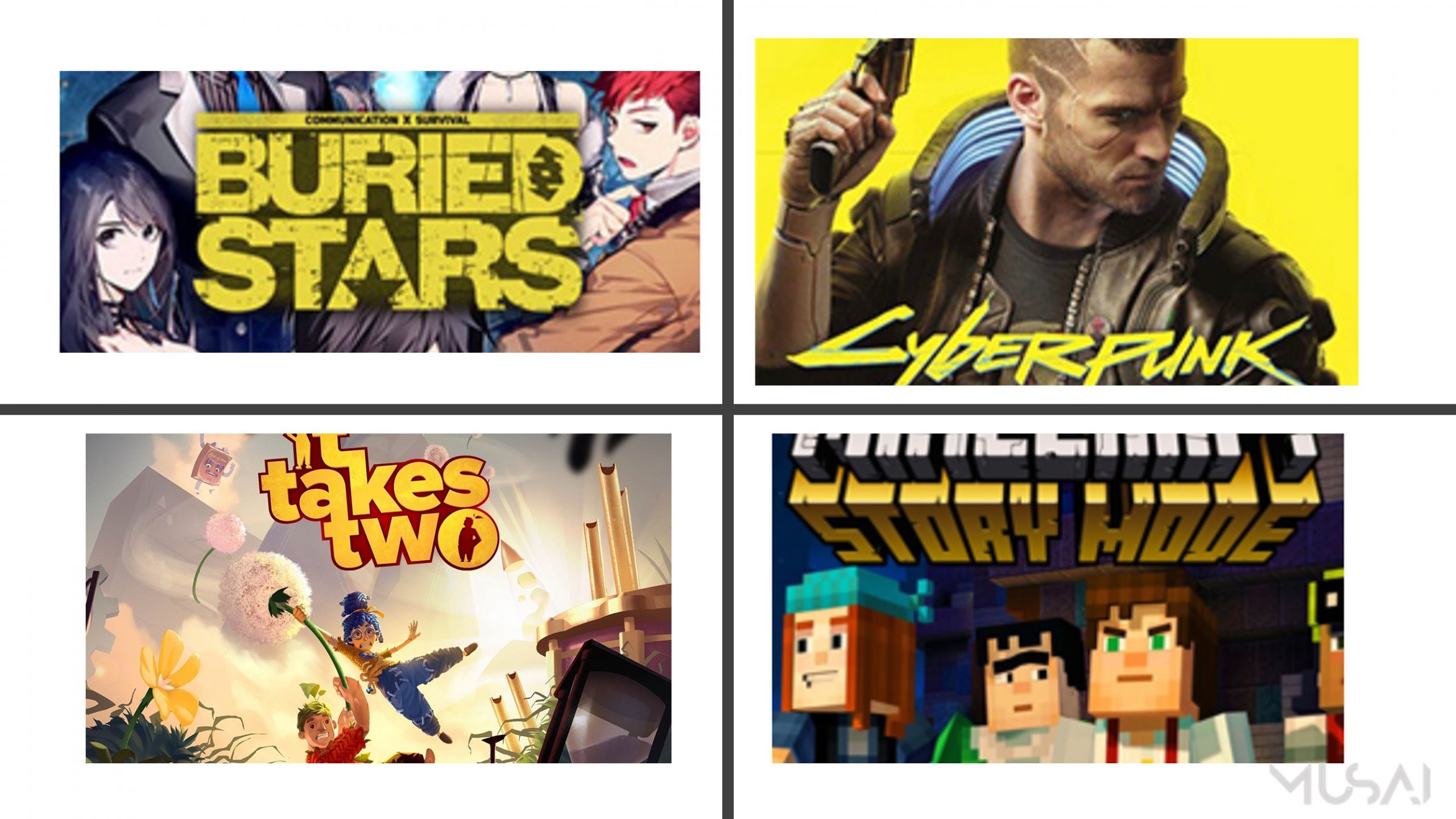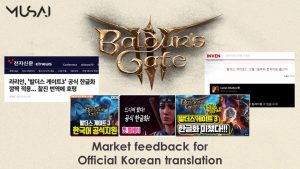[MUSAI] How to localize STORY-oriented games

Video games have become a direct reflection of our cultural identity, symbolizing artistic dimension and expression of modern-day values. This can be expressed through the four basic components of a game otherwise known as the mechanics, aesthetics, technology, and ‘STORY’.
While we have witnessed the race to achieve the best graphics in a game, recent trends in the market illustrate the importance of the story is becoming more prominent than other elements of a game. Moreover, we are seeing the adoption of Nonlinear gameplay from many developers, as this creates the sense of a unique and personalized story for the user, which progress is measured through self-determined goals, independent of the scripted game elements in the environment.
For a localization company like us, it’s a big mission to work on how well the story can be brought to life so that gamers can experience full immersive gameplay.
In this article, we’ll dive into some main points and useful tips to keep in mind when localizing a story-oriented game.

Part 1 – Avoid allocating too many resources in the directive roles of the project
Story-oriented games usually have a large volume of work to be localized, and as a result, schedules and deadlines can be demanding. This simply doesn’t mean to have more hands on deck, but rather the appropriate allocation of resources to maintain the artistic vision and flowing continuity of the story.
During text localization, we recommend that one lead reviewer oversees the entire translation to maintain the storyline and translation style. As for MMORPG, the sheer volume of work may be impossible for just one or two reviewers to handle. In this case, it’s recommended to perform orientation and familiarization of the game to create a detailed localization style guide for all team members and prevent style/flow inconsistencies between staff.
This is also similar for the audio localization during Voice-over work. We recommend one Voice Director to conduct the recording sessions to maintain the style of the voiceover performance. Just as you don’t see multiple film directors directing a movie.
The dialogue between characters drives the narrative of a story driven game, and the voice director must imagine the performance style, specific character traits, situational context and even the space and distance between characters. For this reason, we can see why having several voice directors involved in one project increases the risk of inconsistency in the multiple aspects of the performance, creating awkward and unnatural flow of speech. All these aspects must be considered before the recordings even begin, when the casting director selects the suitable talent candidates for the roles.
However, if the volume of work is physically impossible to cover by one director in a fixed amount of time, the work should be split into specific sections to prevent odd interactions between characters. Of course, this splitting of work will be specific to the dynamics of the story and interactions within the game, so the audio director must assess the project and details of the story and co-ordinate the project volumes accordingly.
Part2 – Work In Story Order
In a perfect world, working in story order during localization would enable the team to perform smooth and consistent translations and voice recordings tailored to the flow of the story.
This was covered in our previous article below:
However, in the real world, it’s very rare to receive content neatly organized and sorted in story order of dialogue between the characters. Therefore, it’s necessary to re-organize the script based on the progression of the story, also considering the story deviations and possible choices that the narrative may take for non-linear games.
In the translation phase, the work of arranging and re-combining each mixed translation sentence mainly on characters and stories may be repeated. It might cause some problems such as omissions and typographical errors that may occur, causing confusion of what is required and what can be omitted.
In the recording phase, obviously you would want to record in order of the progression of the story, to avoid any consistency or flow issues with the performance. For non-linear games, many lines of dialogue may be re-used and joined to other parts of dialogue, with different choices in the game resulting in different paths of dialogue a user may experience. The performance of the voice must be considered in these situations to create a harmonious and natural flow of speech, even when used in multiple situations and scenarios.
Working in this way requires multiple factors of additional effort, however, this creates a defined map and outline of the project, increasing the overall quality and minimizing rework down the line. As with all projects, it becomes easier to finish if you struggle in the beginning.

Part 3 – The Little details make the Big difference.
All the details must be considered, not just the main storyline, but the finer details such as the emotional nuances of the voice performances.
In the process of translating and script adaptation, we consider not only the length of each sentence, but the situational and contextual details which would relate to the performance. This enhances the ability to finalize the style and choice of words during the recordings, to reflect the character personality traits as well as the situation.
This also provides more context for the voice actor to express his or her performance abilities from subtle emotional nuances to great complex and diverse range of emotions.
Part 4 – Localization QA – Quality over Quantity!
I think this is a very overlooked aspect in the recent days of the gaming industry. With the face of a global pandemic shifting the work process of many game developers, we are faced to take additional measures to improve the quality of games for the end user. In our 20 years of working in the game industry, we have recently been seeing a trend of game users dissatisfied with the state of games during their launch.
We may have completed our initial scope of work for the project, but the work doesn’t stop there. We would also need to verify if the delivered text or audio assets have been properly implemented into the game. Moreover, there may be other overlooked aspects from the developers causing additional issues, which may cascade into more issues.
Many times, there can be changes to the story, characters, and even mechanics and technology of a game mid production of the development. Which is why it is important to test and mitigate these issues and possible bugs with text, or voice files. Even simple things such as inconsistent volume levels of dialogue during conversation, or truncation of text in the UI or subtitles. With so many aspects of the game to test and consider, it’s easy to get lost in the madness, compromising the quality of the experience, and losing touch with the initial vision and essence of the story. Therefore, it’s important to ensure the directors and reviewers who participated in the localization to play the build and ensure the story of the game doesn’t deviate from the original conception.
While this article is focused on story-oriented games, there are many similarities in the basic localization process of regular games. However, we hope this article illustrates the importance of the many aspects that contribute specifically to the overall quality of story driven games, and ways to avoid common pitfalls during the development to ultimately create engaging, interactive, and immersive stories for gamers around the globe.
** Did you enjoy this article? Please click subscribe and share this story.
BOOST YOUR PLAY! Musai Studio







